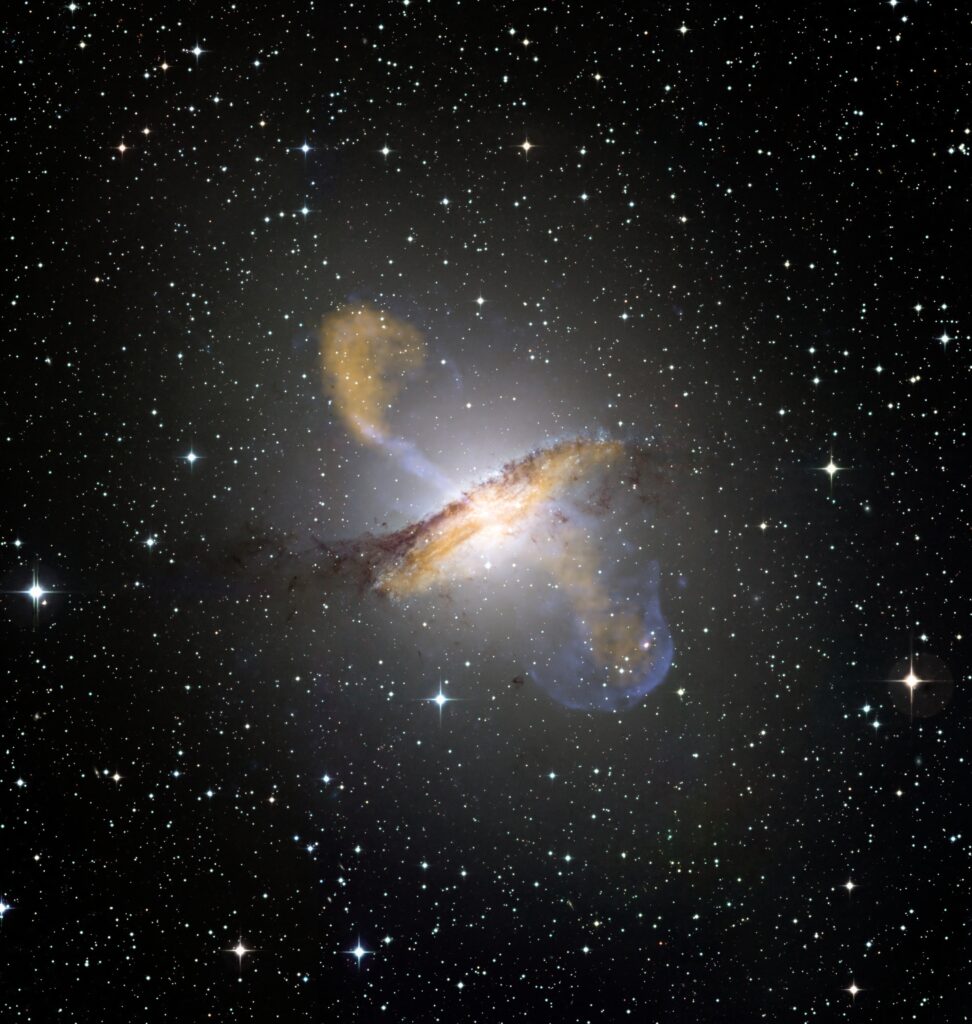Καλώς ήρθατε

Καλώς ήρθατε στην ιστοσελίδα μου! Είμαι Αναπληρωτής Καθηγητής στο Τμήμα Φυσικής του Πανεπιστημίου Πατρών. Τα ερευνητικά μου ενδιαφέροντα εστιάζουν στη Θεωρητική και Υπολογιστική Αστροφυσική. Εργάζομαι κυρίως σε θέματα που σχετίζονται με τα αστροφυσικά ρευστά και τη μαγνητοϋδροδυναμική μέσω αναλυτικών και αριθμητικών προσεγγίσεων, με εφαρμογές κυρίως σε αστέρια νετρονίων και αστροφυσικούς πίδακες. Στα αστέρια νετρονίων μελετάω την εξέλιξη του μαγνητικού τους πεδίου και την επίδρασή του στο ρυθμό περιστροφής τους και την ακτινοβολία τους. Στους πίδακες εξετάζω το ρόλο του μαγνητικού πεδίου στην εν γενεί εξέλιξή τους και στην ευστάθεια τους. Εκτός από τα παραπάνω ενδιαφέρομαι για λύσεις που περιγράφουν μαγνητικά πεδία σε ισορροπία, την ευστάθειά αυτών των λύσεων και την δυναμική των ασταθειών εφόσον αυτές εμφανίζονται.
Σύντομο Βιογραφικό Σημείωμα
Ακαδημαϊκή Πορεία
- Επίκουρος Καθηγητής Τμήματος Φυσικής Πανεπιστημίου Πατρών. Γνωστικό Αντικείμενο: Θεωρητική και Υπολογιστική Αστροφυσική. Μονιμοποίηση ΦΕΚ 2463/30-9-2022 τ. Γ’, ΦΕΚ Διορισμού 304/τ.Γ΄/7-3-2019.
- Επίκουρος Καθηγητής (Μόνιμος) Τμήμα Μαθηματικών Επιστημών, Πανεπιστήμιο Durham (Ηνωμένο Βασίλειο, 2017-2019).
- Μεταδιδακτορικός Ερευνητικός Συνεργάτης, Πανεπιστήμιο του Leeds (Ηνωμένο Βασίλειο, 2015-2017).
- Μεταδιδακτορικός Ερευνητικός Συνεργάτης, Πανεπιστήμιο ΜcGill (Καναδάς, 2012-2014).
- Μεταδιδακτορικός Ερευνητικός Συνεργάτης, Πανεπιστήμιο Purdue (ΗΠΑ, 2009-2012).
Σπουδές:
- Διδακτορικό: “Σχετικιστική Μαγνητοϋδροδυναμική” (2009), Πανεπιστήμιο του Cambridge (Ηνωμένο Βασίλειο), Επιβλέπων: Donald Lynden-Bell.
- Part III of the Mathematical Tripos (2005), Τμήμα Εφαρμοσμένων Μαθηματικών και Θεωρητικής Φυσικής, Πανεπιστήμιο του Cambridge (Ηνωμένο Βασίλειο).
- Πτυχίο Φυσικής (2004) Τμήμα Φυσικής, Πανεπιστήμιο Πατρών. Βαθμός: Άριστα (9.1).
Βραβεία – Διακρίσεις – Υποτροφίες:
- Επίτιμος Εταίρος (Honorary Fellow) Πανεπιστημίου Durham (Ηνωμένο Βασίλειο, 2019).
- Ερευνητικός Επισκέπτης (Research Visitor) Πανεπιστημίου Leeds (Ηνωμένο Βασίλειο, 2019).
- Βραβείο Καλύτερης Ομιλίας Μεταδιδακτορικού Ερευνητή, Συνέδριο “UK-MHD” Northumbria University, 2015.
- Εταίρος Κέντρου Αστροφυσικής Έρευνας Κεμπέκ (Καναδάς, 2012-2014)
- Υποτροφία Διδακτορικών Σπουδών “Isaac Newton for Study in Astronomy and Gravity” Πανεπιστήμιο του Cambridge (2005-2009).
- Υποτροφία Marie Curie, Διεθνές Δίκτυο Εκπαίδευσης Διδακτορικών Φοιτητών, Max Planck Center for Astrophysics, Garching (Γερμανία, 2007)
- Υποτροφία Διδακτορικών Σπουδών “George and Marie Vergottis, Cambridge European Trust”, Πανεπιστήμιο του Cambridge(2005-2009).
- Υποτροφία Διδακτορικών Σπουδών “Science and Technology Facilities Council” (2005-2009).
- Υποτροφία Μεταπτυχιακών Σπουδών “George and Marie Vergottis, Cambridge European Trust”, Πανεπιστήμιο του Cambridge (2004-2005).
- Υποτροφία ΙΚΥ, Προπτυχιακές Σπουδές στο Τμήμα Φυσικής του Πανεπιστημίου Πατρών (2000-2004).
Έρευνα
Αστάθειες Αστροφυσικών Πιδάκων
Οι αστροφυσικοί πίδακες είναι ευθυγραμμισμένες ροές πλάσματος που εκκινούν από συμπαγή αντικείμενα (μελανές οπές, αστέρια νετρονίων) ή και από νεοσχηματοζόμενα αστέρια. Μερικοί πίδακες φτάνουν σε σχετικιστικές ταχύτητες και γίνονται εξαιρετικά λαμπροί δημιουργώντας εντυπωσιακές δομές.

Οι πίδακες είναι εξαιρετικά ευσταθείς, η αρχική τους ακτίνα είναι συγκρίσιμη με τον ορίζοντα της μελανής οπής από όπου προέρχονται, αλλά μπορούν να εκτείνονται σε όλη τη διάσταση του γαλαξία τους χωρίς να χάνουν τη συνοχή τους. Σε πολύ μεγάλες αποστάσεις η ροή γίνεται ασταθής και έντονα τυρβώδης, Εξετάσαμε την συμπεριφορά τους μέσω 3-διάστατων προσομοιώσεων στην εργασία Gourgouliatos and Komissarov 2018a και βρήκαμε ότι μία πιθανή αιτία αυτών των ασταθειών είναι η φυγόκεντρος αστάθεια Gourgouliatos and Komissarov 2018b. Σε επόμενες μελέτες εξετάσαμε τον ρόλο του μαγνητικού πεδίου [1] και [2], ο οποίος τείνει να βελτιώνει την ευστάθεια των πιδάκων .
Neutron Stars and their Magnetic Fields
Neutron stars are end points of stellar evolution, created following the gravitational collapse of massive stars after supernova explosions. Their radius is about 10km and their mass approximately 1.5 solar masses. Neutron stars host the strongest magnetic fields in the Universe, reaching up to 1015 G, which is orders of magnitude above any magnetic field we have ever created artificially on Earth, and rotate very fast, the fastest that we know of has a period of 0.0014 s.
A key point in our understanding of neutron stars is the structure and the evolution of their magentic field. The radiation we receive from neutron stars comes in pulses because of the combined effect of rotation and magnetic field. Moreover, neutron star magnetic field is responsible for heating and explosive behaviour, especially in the so called magnetars hosting very strong magnetic fields. Motivated by this question we have developed a numerical simulation which traces the evolution of the magnetic field in the crust. The evolution of the magnetic field in the crust is because of the Hall Effect: the electric current is carried exclusively by electrons, leading to a special mathematical description.
We have found, after running a large ensemble of simulations, that the evolution of the magnetic field goes through three basic stages: The early evolution of the magnetic field is sensitive to the initial conditions, with the magnetic field structure changing drastically in a short time. Then the magnetic field forms whistler waves and oscillates. Eventually it relaxes to a state where the electron fluid isorotates with the magnetic field lines -an equivalent of Ferraro’s law from Solar Physics. The latter state is reached for a variety of initial conditions and is an attractor towards which the field is trying to settle.
In this animation you can see the evolution of the magnetic field in the crust of a neutron star. The black contours are the poloidal field lines, the colour scale in the left panel shows the toroidal field while in the right panel it shows the angular velocity of the electrons.
In this animation you can see the evolution towards the attractor. The horizontal axis is the poloidal flux which also corresponds to the poloidal field lines and the vertical axis denotes the angular velocity of the electrons. The system is trying to relax towards a state of isorotation, minimizing the spread of angular velocity on a given field line.
For a more technical description of the simulations and the results you may read these papers: Gourgouliatos and Cumming 2014a, Gourgouliatos and Cumming 2014b and Gourgouliatos et al. 2013.
Relativistic Magnetic Fields
Some astrophysical systems, such as AGN jets and gamma-ray bursts, involve dynamically significant magnetic fields and very high velocities. To model those, one needs to get into the realms of Relativistic MHD. We have found analytical and semi-analytical solutions of relativistically expanding magnetic fields, which can be applied to conical and cylindrical jets. The details of this work can be found in Gourgouliatos and Lynden-Bell 2008, Gourgouliatos and Vlahakis 2010 and Gourgouliatos et al. 2012.
Magnetic Bubbles
Some clusters of galaxies with AGNs in their centres contain gigantic X-ray bubbles. As these bubbles are long-lived entities they must be in some sort stable configuration. Motivated by this question, we have explored solutions of magnetic field and hot plasma in stable equilibrium (Gourgouliatos et al. 2010). In our solutions the magnetic field drops smoothly to zero near the surface, thus there are no surface currents, which would lead to resistive instabilities. We have extended our model to expanding bubbles (Gourgouliatos and Lyutikov 2012). Depending on the adiabatic index of the plasma content of the bubble, the expansion can lead to a magnetically dominated structure, where current sheets form. Given the large available electric potential, we suggest, that it is possible to accelerate cosmic rays to ultra high energies in these current sheets. Recent observations of the Pierre Auger observatory, indicate a corellation between the sources of the cosmic rays with AGN sources.
Coronal Mass Ejections
Magnetic activity leads to the ejection of matter from the Sun in the form of Coronal Mass Ejections (CMEs). CMEs are thought to exist either in the form of twisted magnetic flux tubes, or disconected magnetic clouds, that expand while propagating away from the Sun. I have found a class of analytical solutions describing the structure and the evolution of a magnetic arcade up to the point of the formation of current sheets (Gourgouliatos 2008). We have also worked on the evolution of a CME while it propagates in the solar system describing the expansion and the twisted magnetic field through an analytical model (Lyutikov and Gourgouliatos 2011).
Press
Reconfinement and loss of stability in AGN jets
We have explored throught three-dimensional simulations the reconfinement and the loss of stability of jets from Active Galactic Nuclei in a recent publication in Nature Astronomy. The University of Leeds has issued a press release and the result was featured in an article in Newsweek.
An anti-glitch in a magnetar
While several sudden spin-up glitches have been observed in pulsars, usually attributed to superfluid material existing in their crusts and cores, there had not been any robust observations of sudden spin-down events. Robert Archibald from McGill Univerisity identified this unique behaviour in magnetar 1E 2259+586. For a more details you may see the press release by NASA and a more technical description can be found here in the original paper published in Nature.
Hall Attractor
While some neutron stars with strong magnetic fields are very active, some others despite the fact that their magnetic being equally strong are pretty quiet. Simulating the evolution of the magnetic field, we have been able to identify that, no matter what was the structure of the magnetic field was when they were born, they will eventually relax to a particular state, that of the “Hall Attractor”. You may find more in the press release by McGill Univerisity or you can read the original paper puslished in PRL.
Outreach
I have been actively involved in outreach activities.
- I am a founding member and first secretary of the Astronomical Society of Patras, in 2001, which has now grown to a big organisation.
- Participation in the outreach group of the Institute of Astronomy in Cambridge and Astro-McGill.
- Moderator of the highly visited greek amateur astronomy website astrovox.gr
- Observation of mutual eclipses occultations of the satellites of Uranus, a project lead by Dr Christou, from Armagh Observatory, done in collaboration with a group of amateur astronomers.